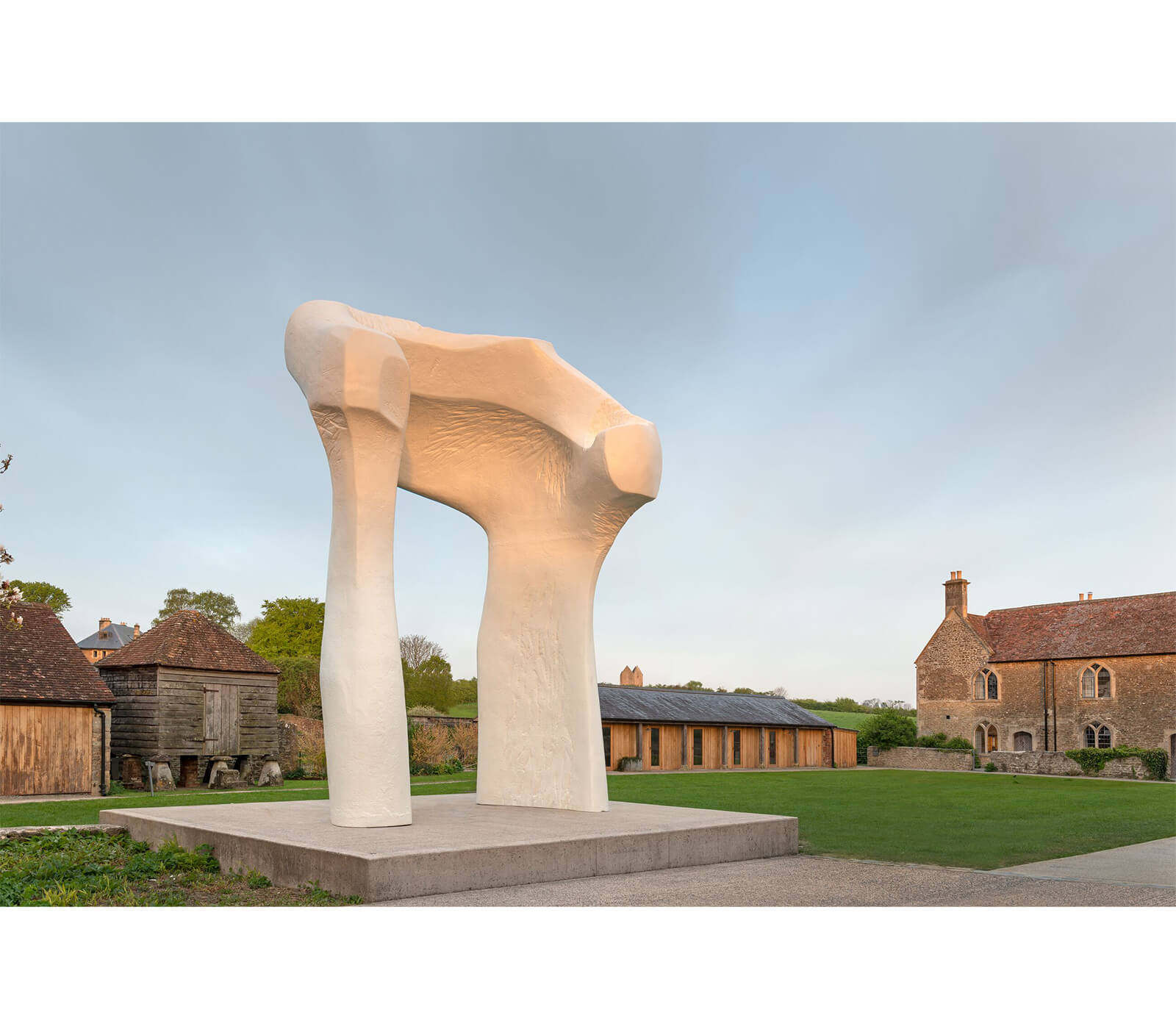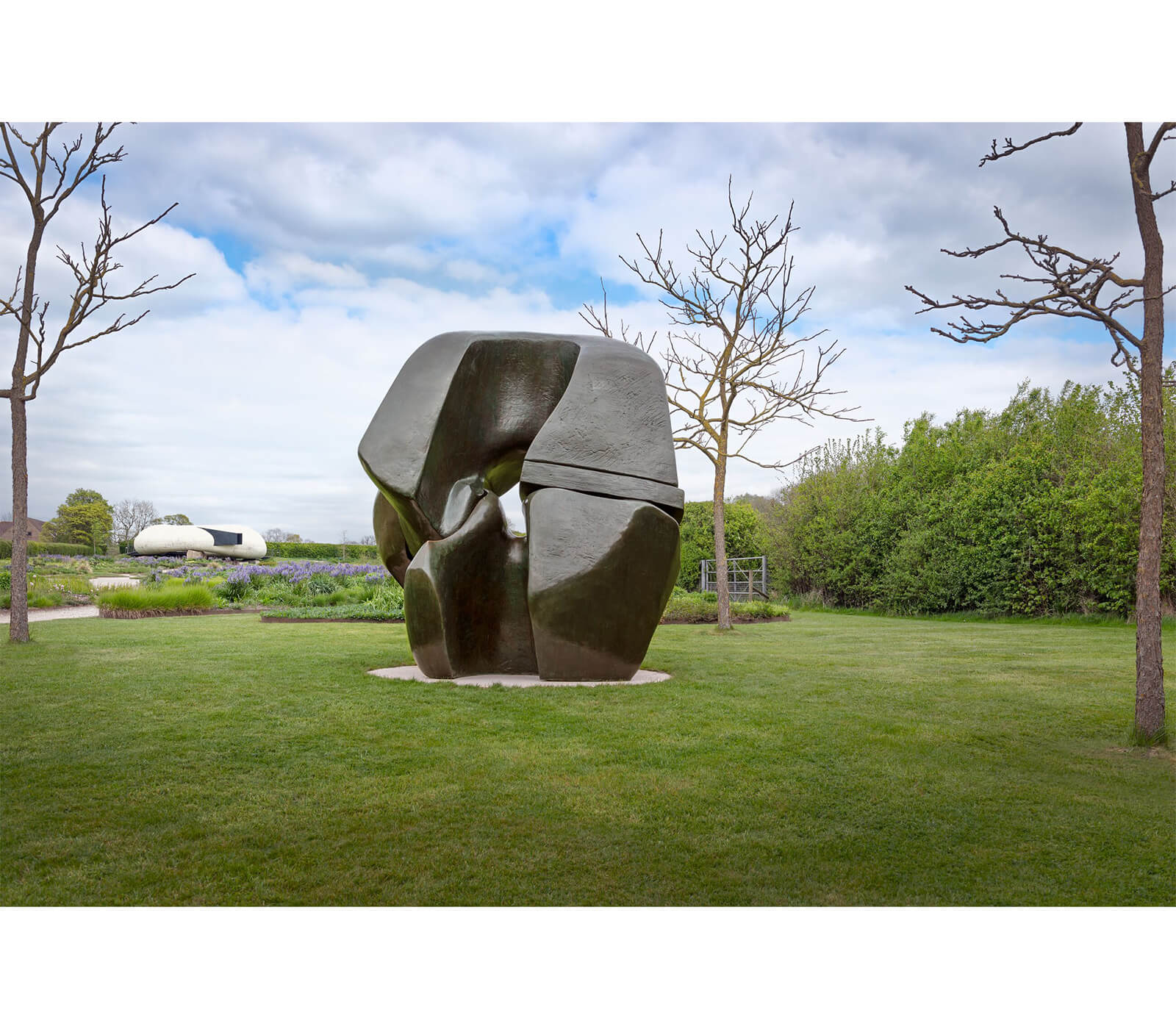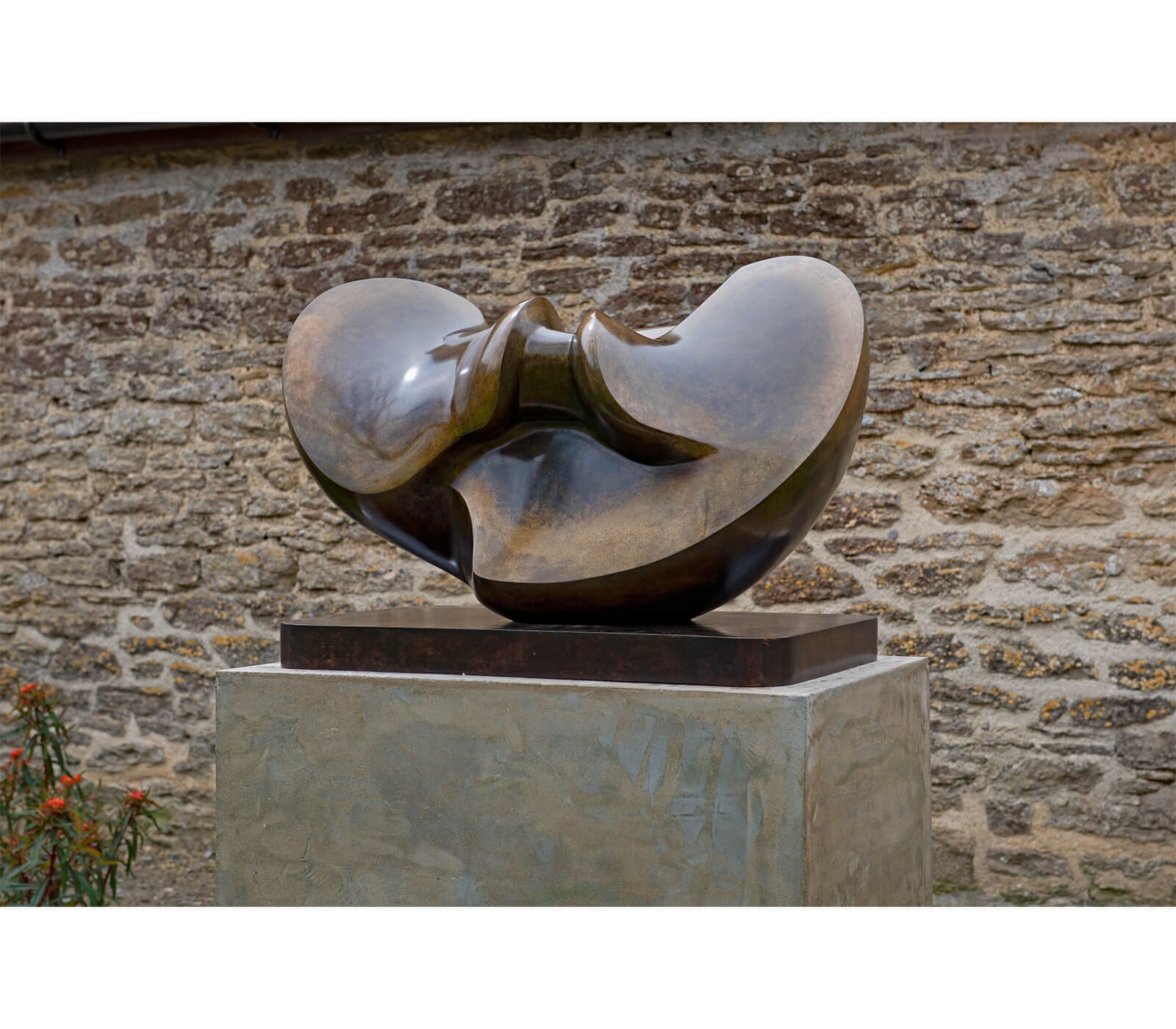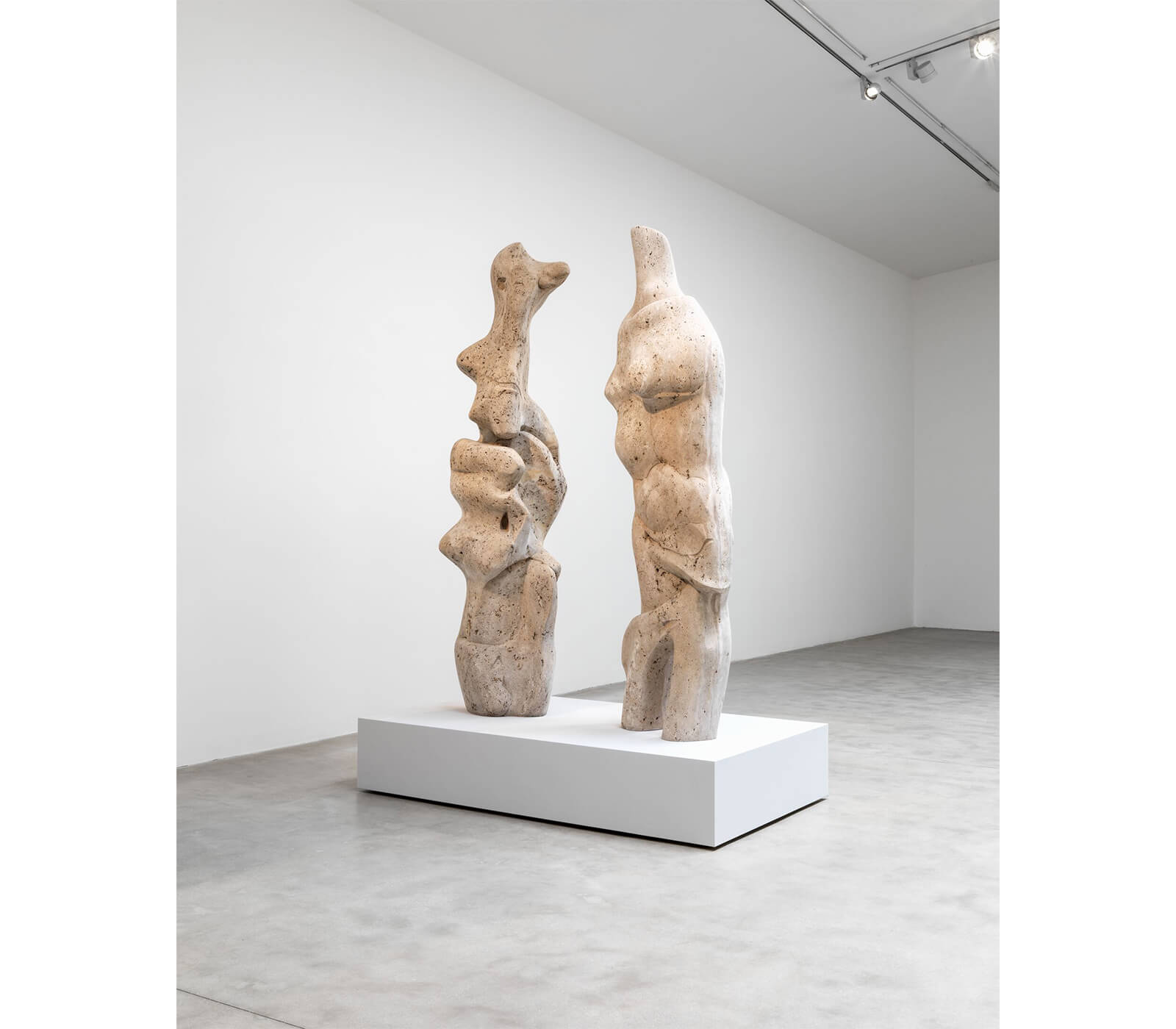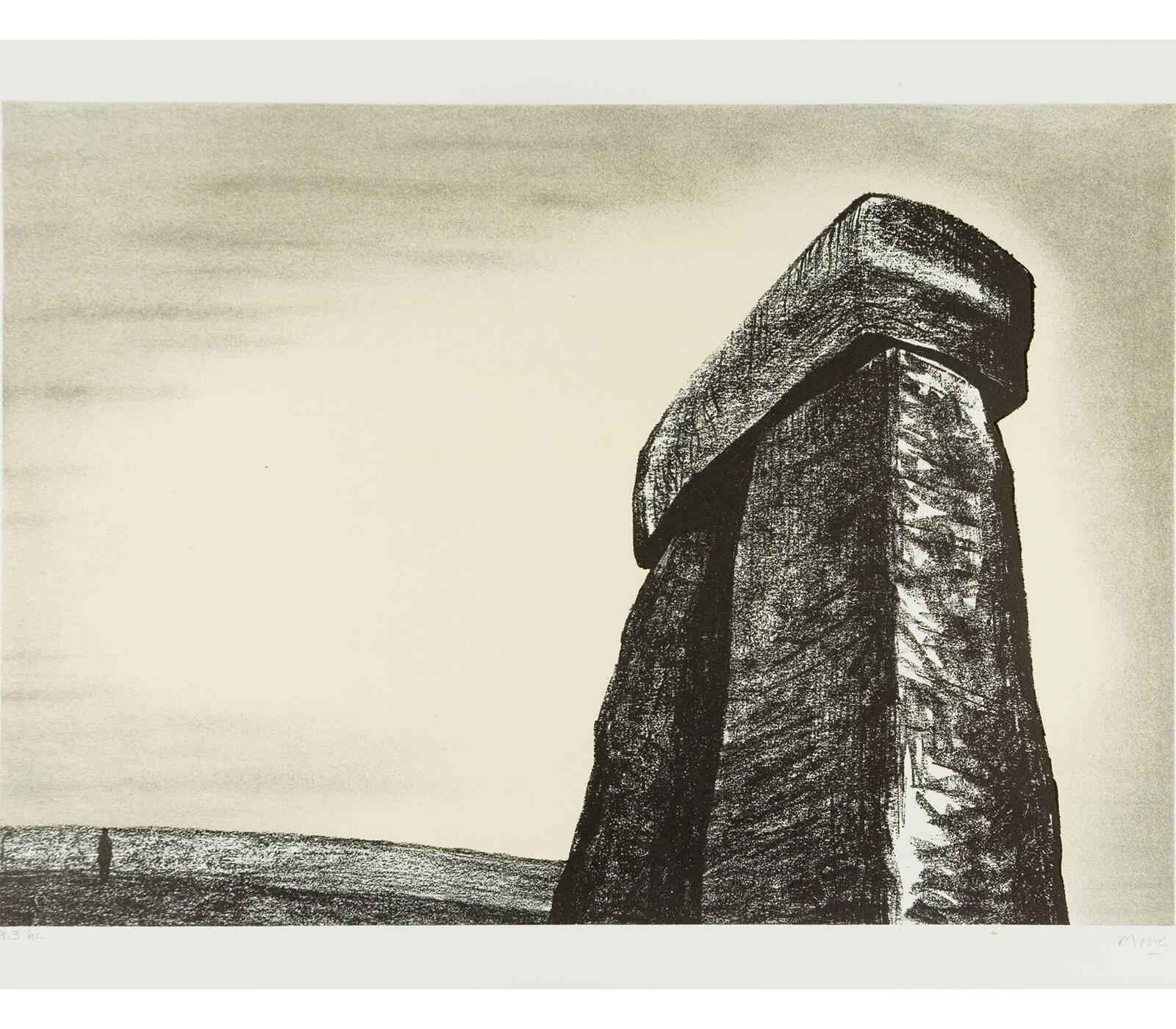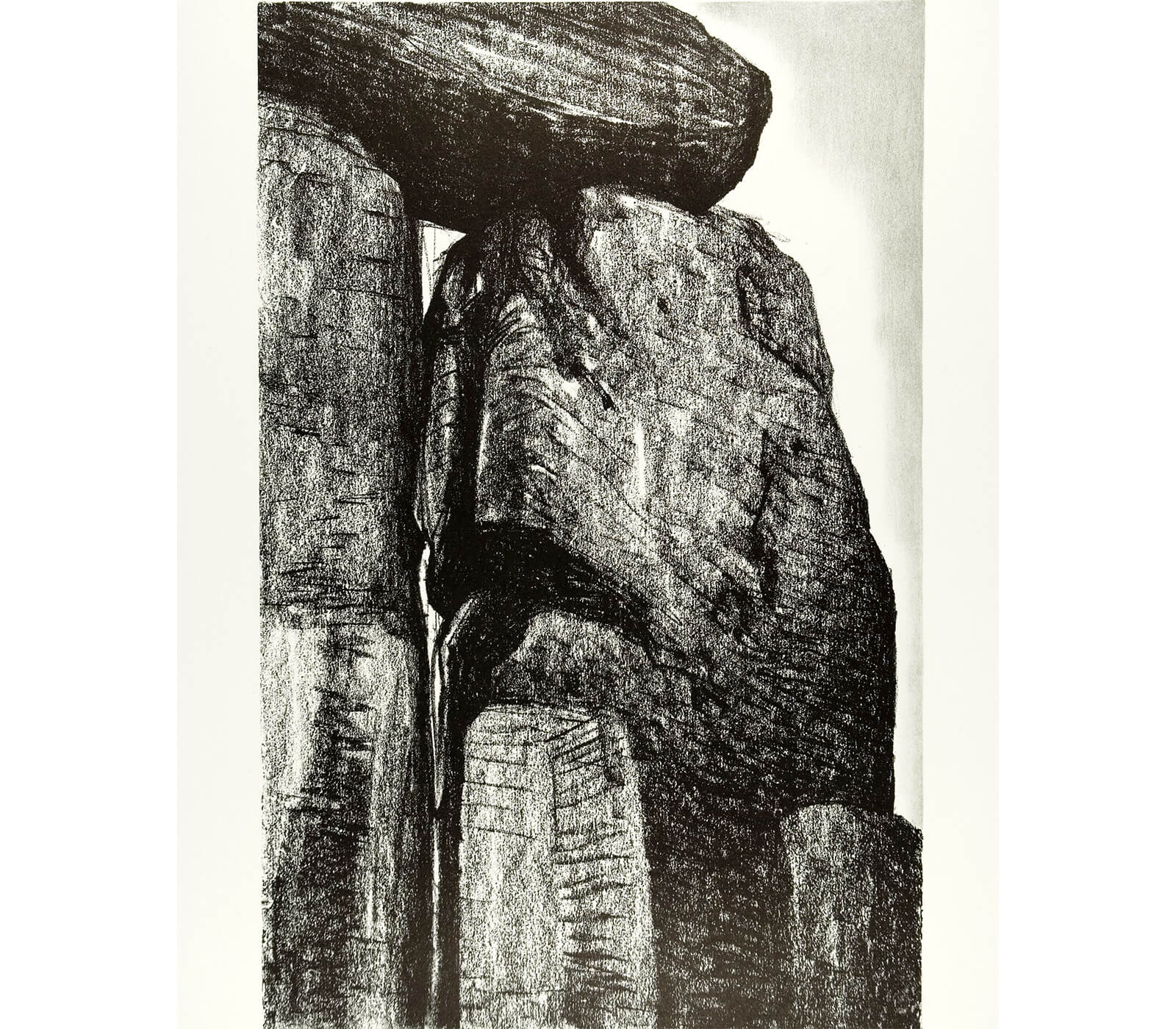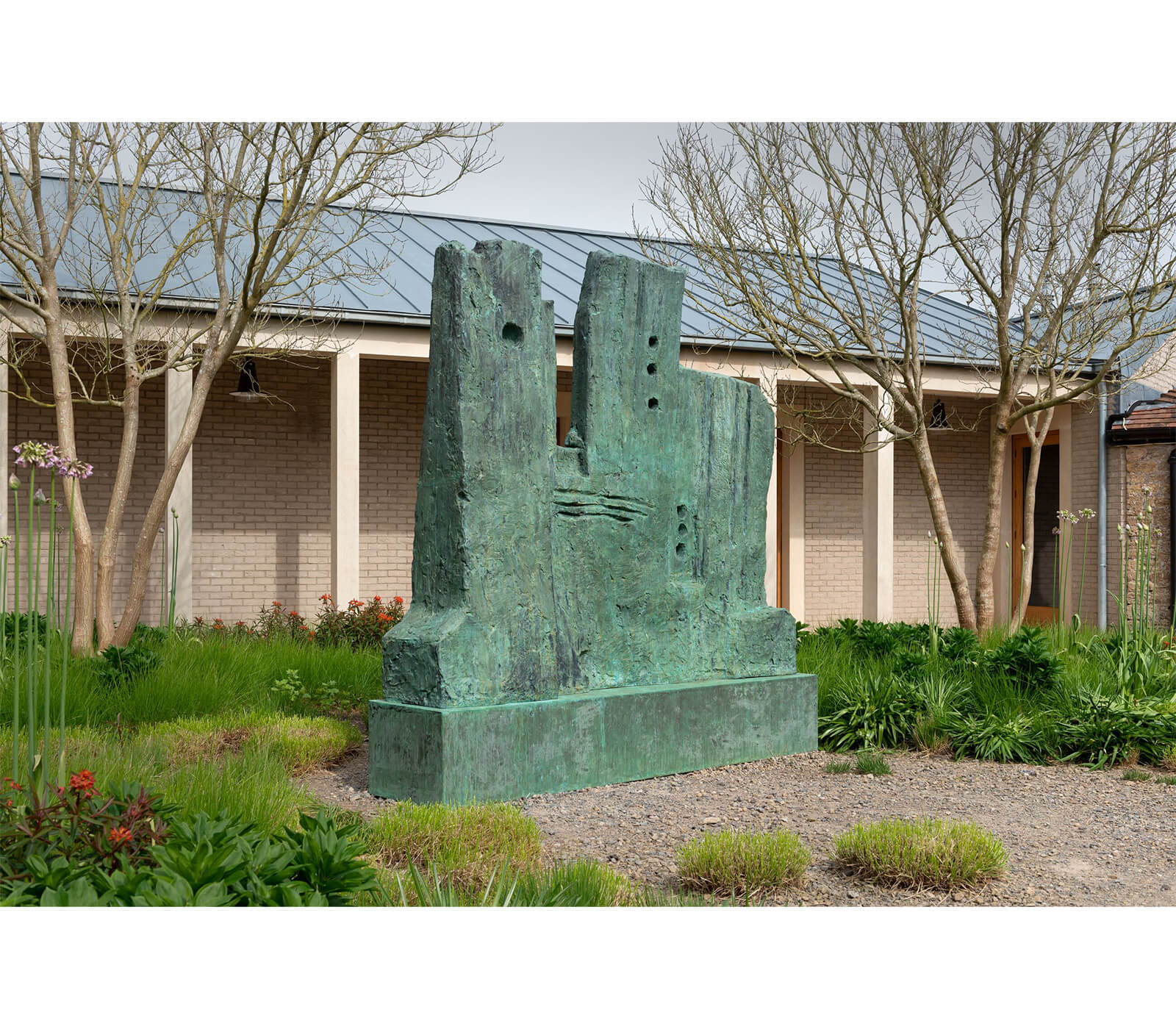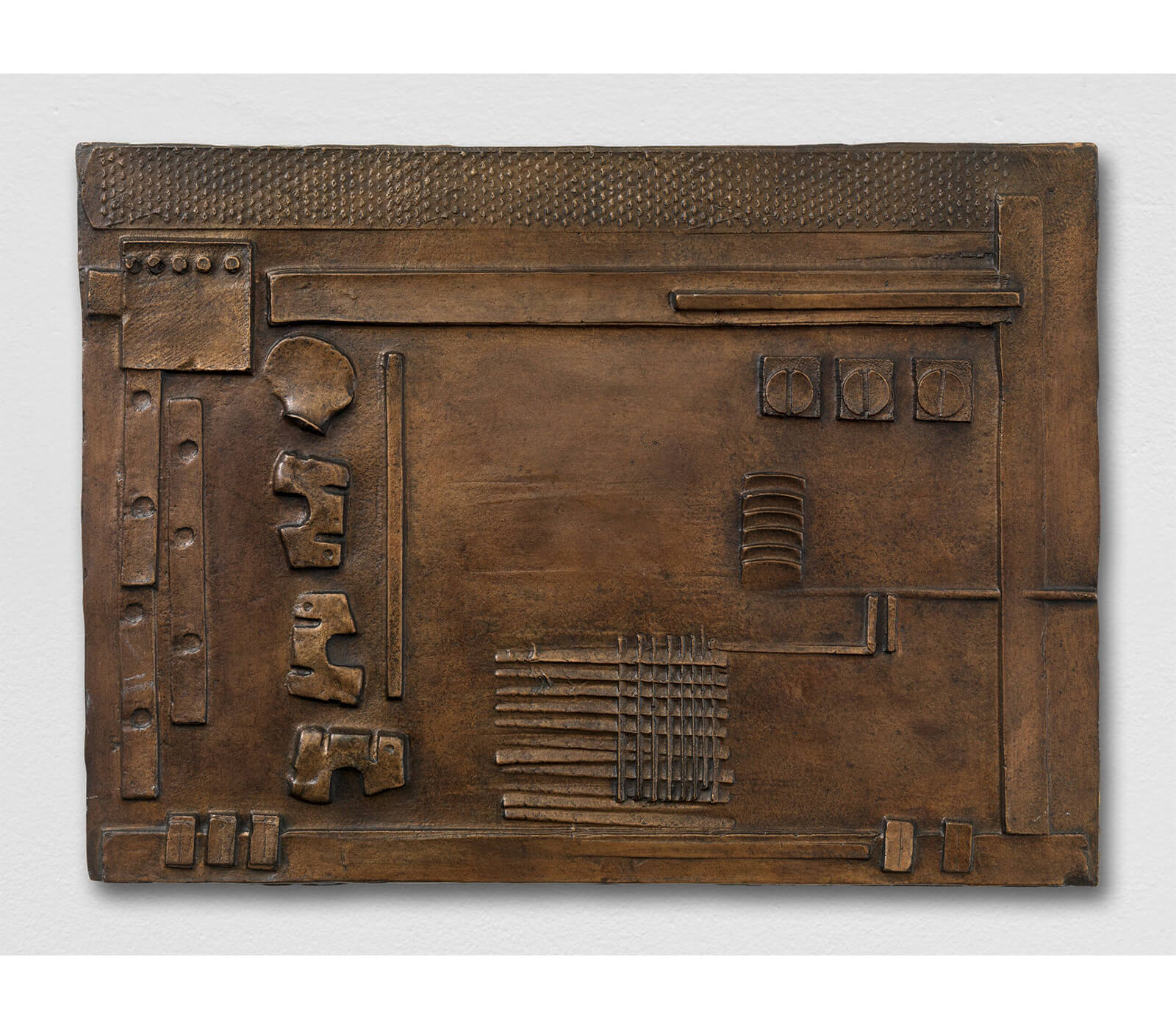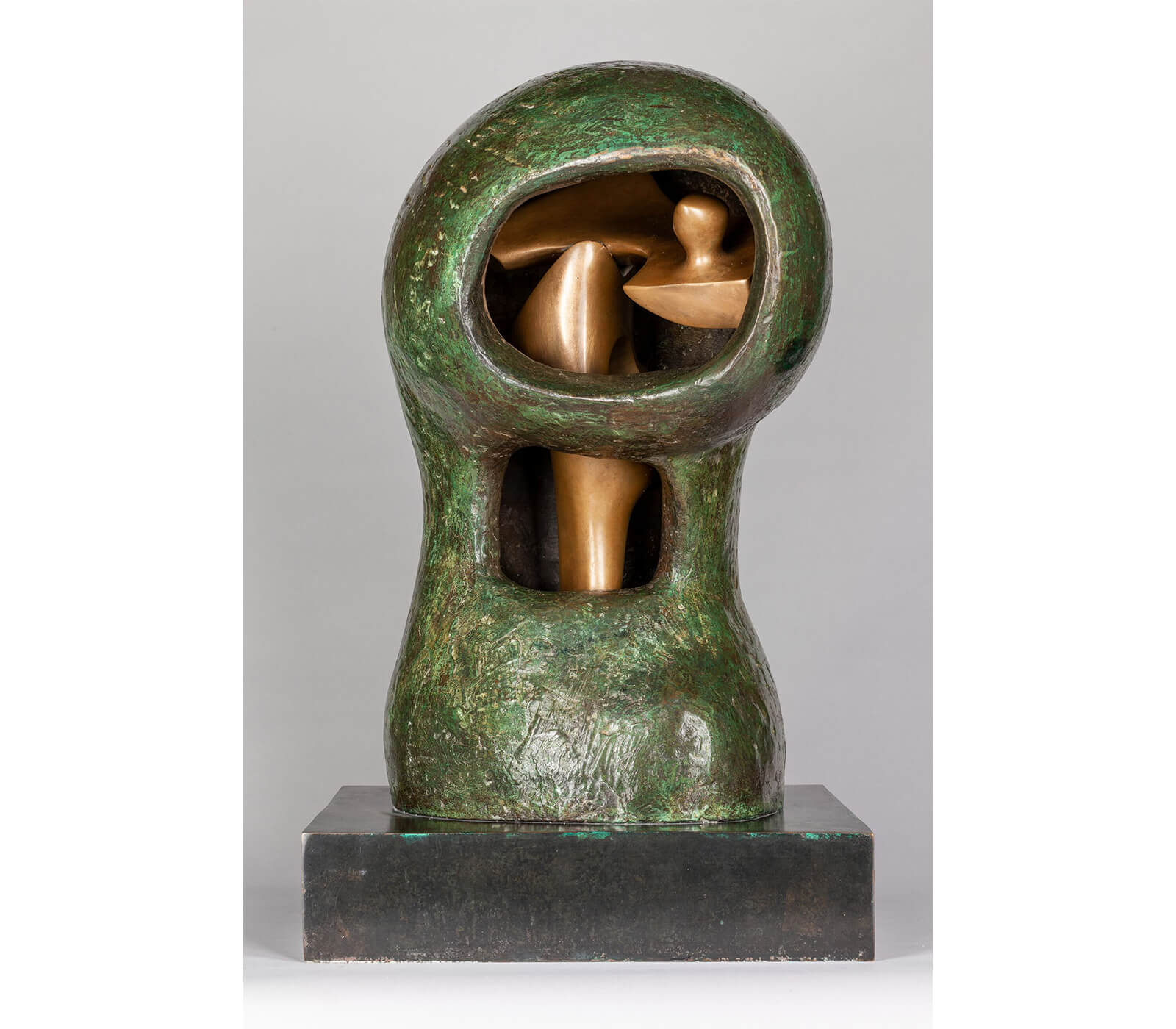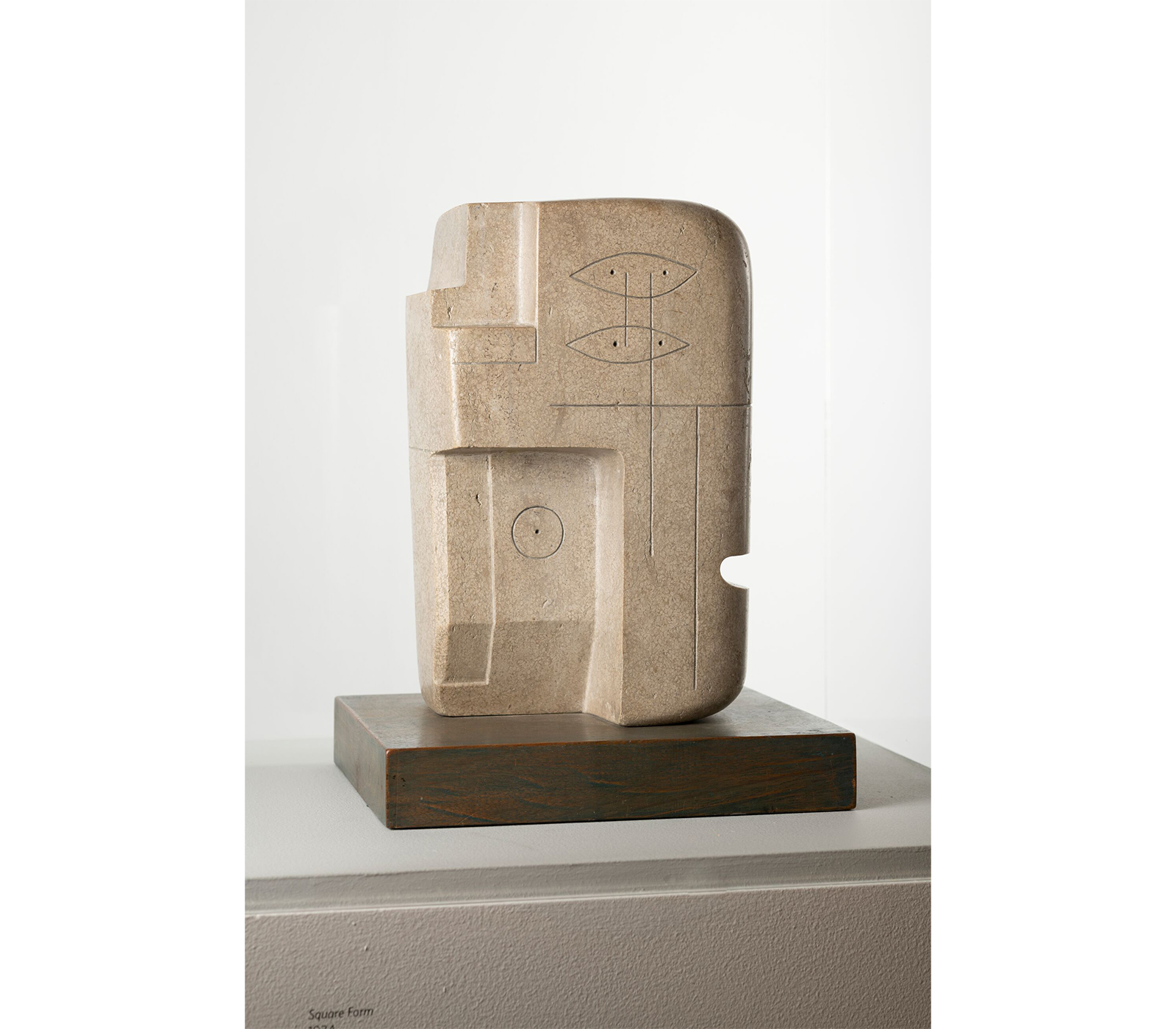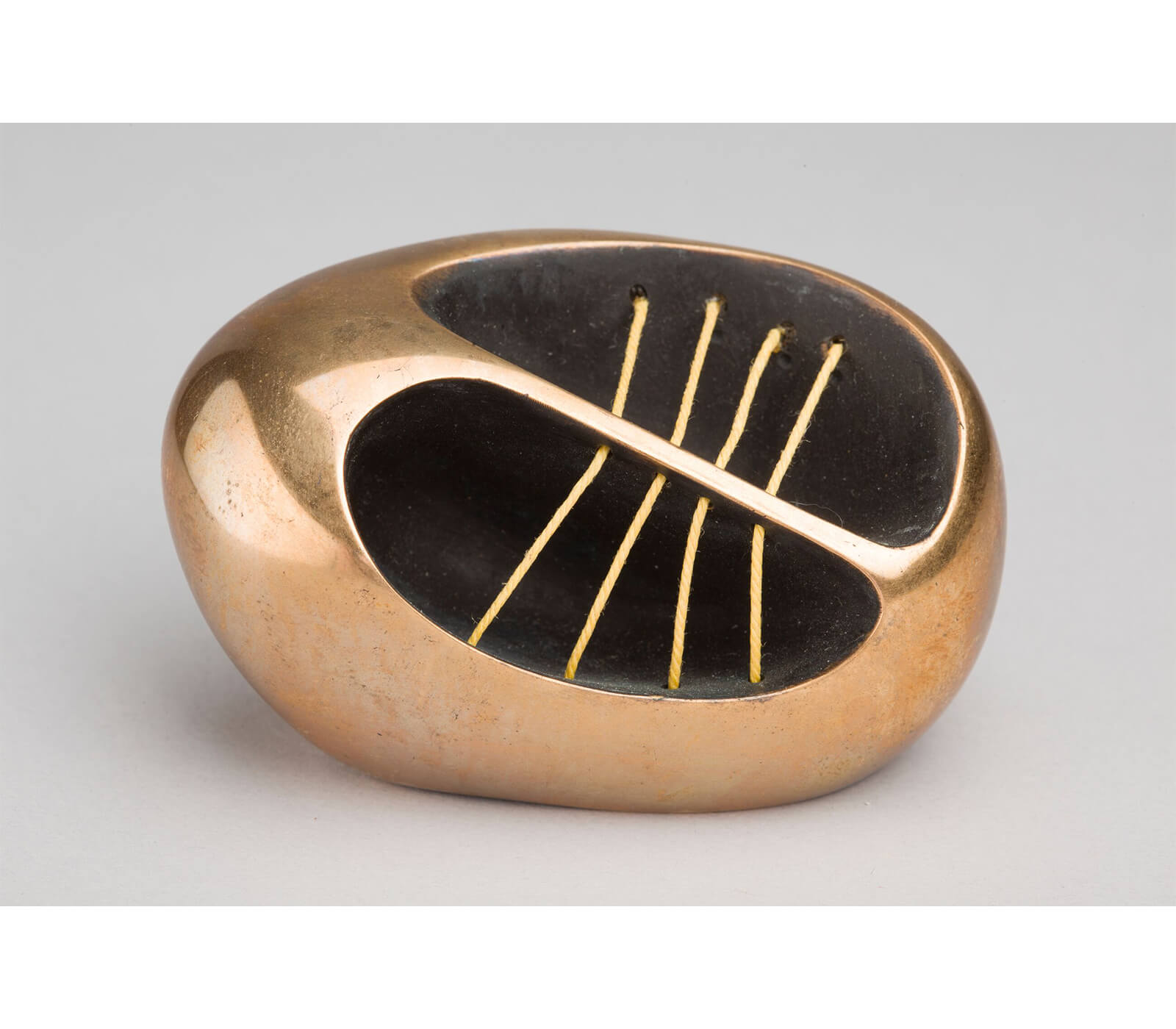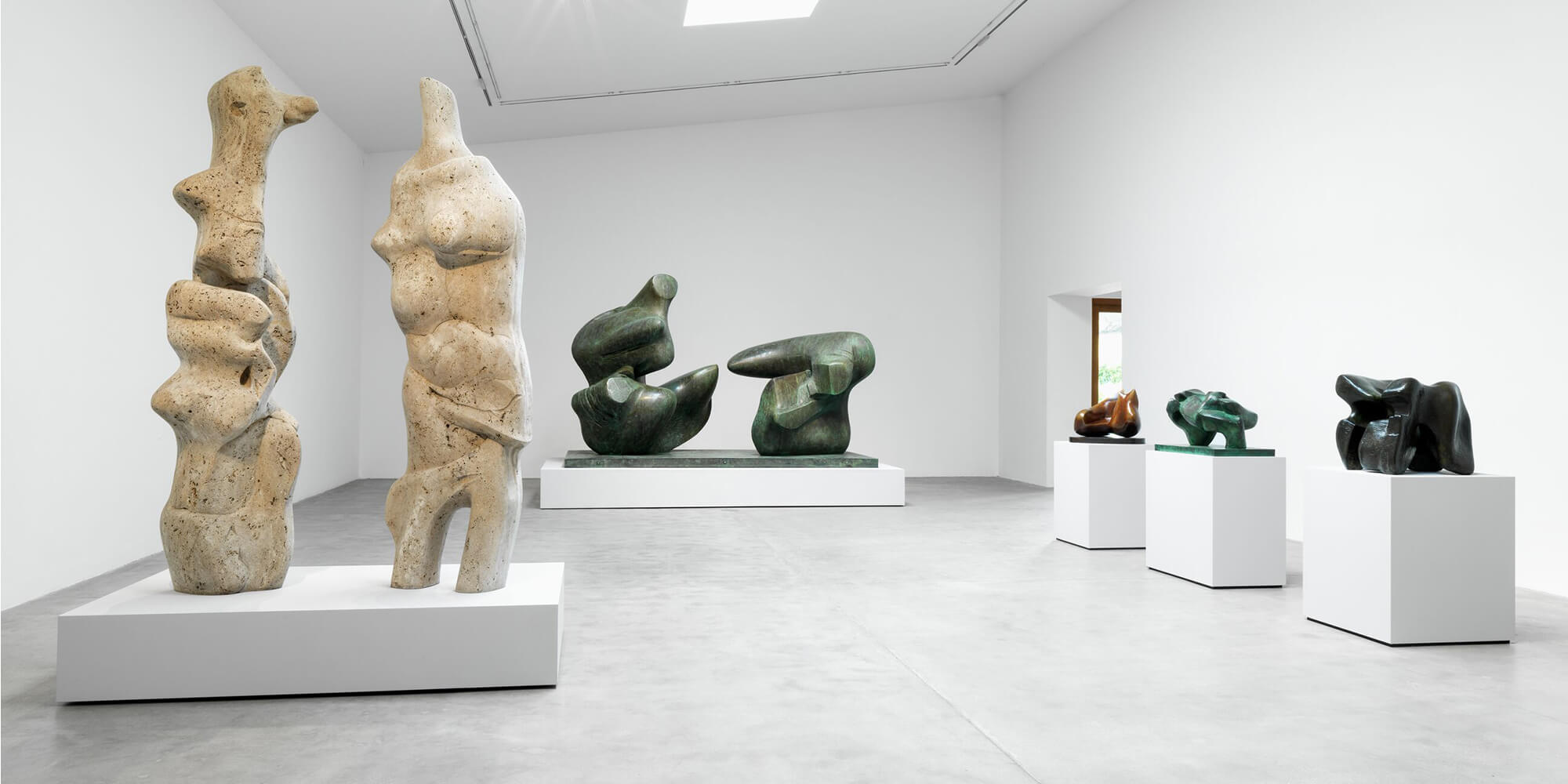
Henry Moore
Sharing Form
28 May – 4 September 2022
Somerset
A comprehensive survey spanning six decades extends across all five gallery spaces, in addition to an open-air presentation of seminal works.
Explore the exhibition
Hauser & Wirth Somerset presents a major exhibition of works by Henry Moore, curated by Hannah Higham of the Henry Moore Foundation in collaboration with the artist’s daughter Mary Moore. A comprehensive survey spanning six decades extends across all five gallery spaces, in addition to an open-air presentation of seminal works including: ‘The Arch’ (1963/69), ‘Large Interior Form’ (1953 – 1954) and ‘Locking Piece’ (1962 – 1963). Alongside the exhibition, the gallery launches a far-reaching education and events programme, including a new Education Lab in partnership with the Arts University Bournemouth.
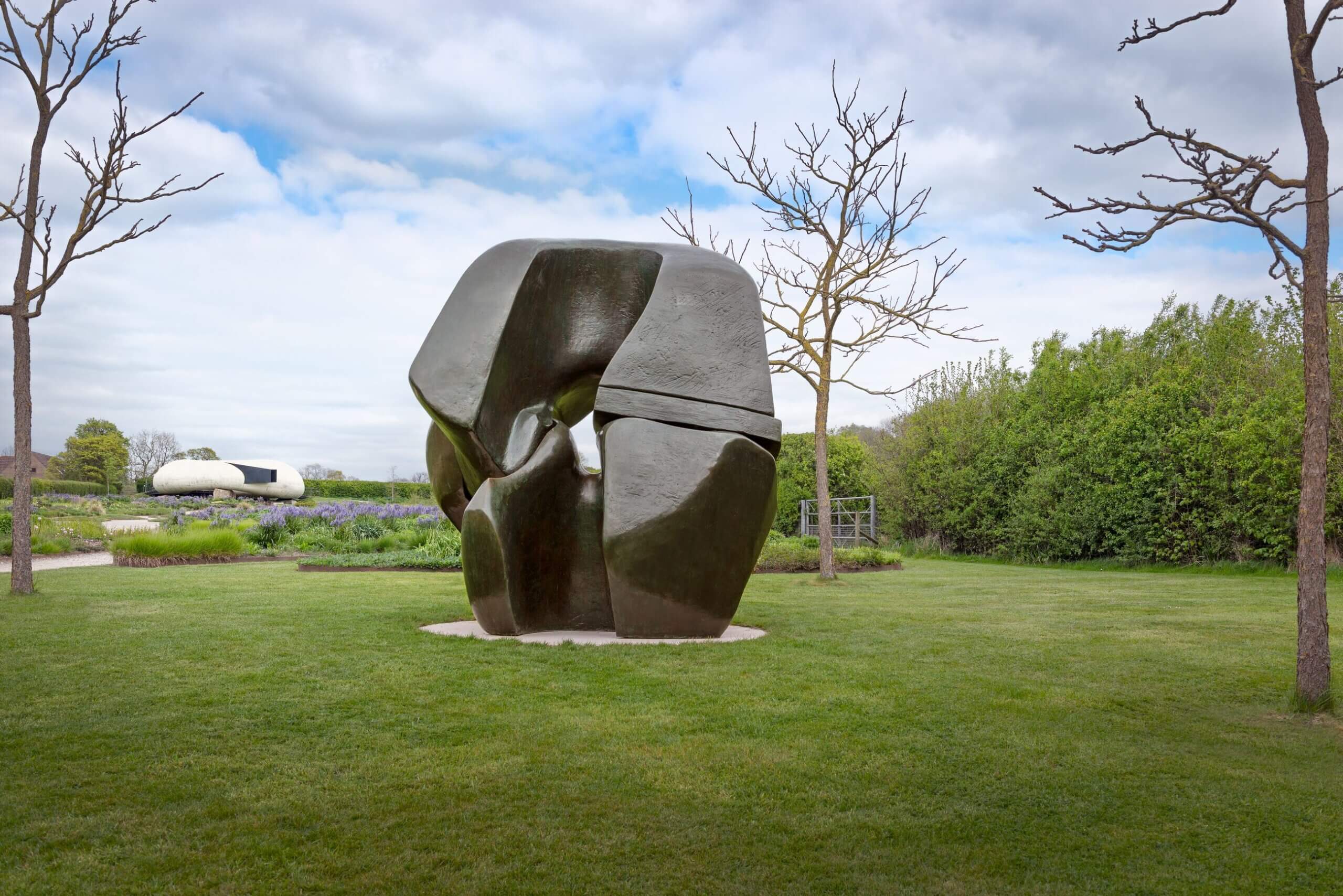
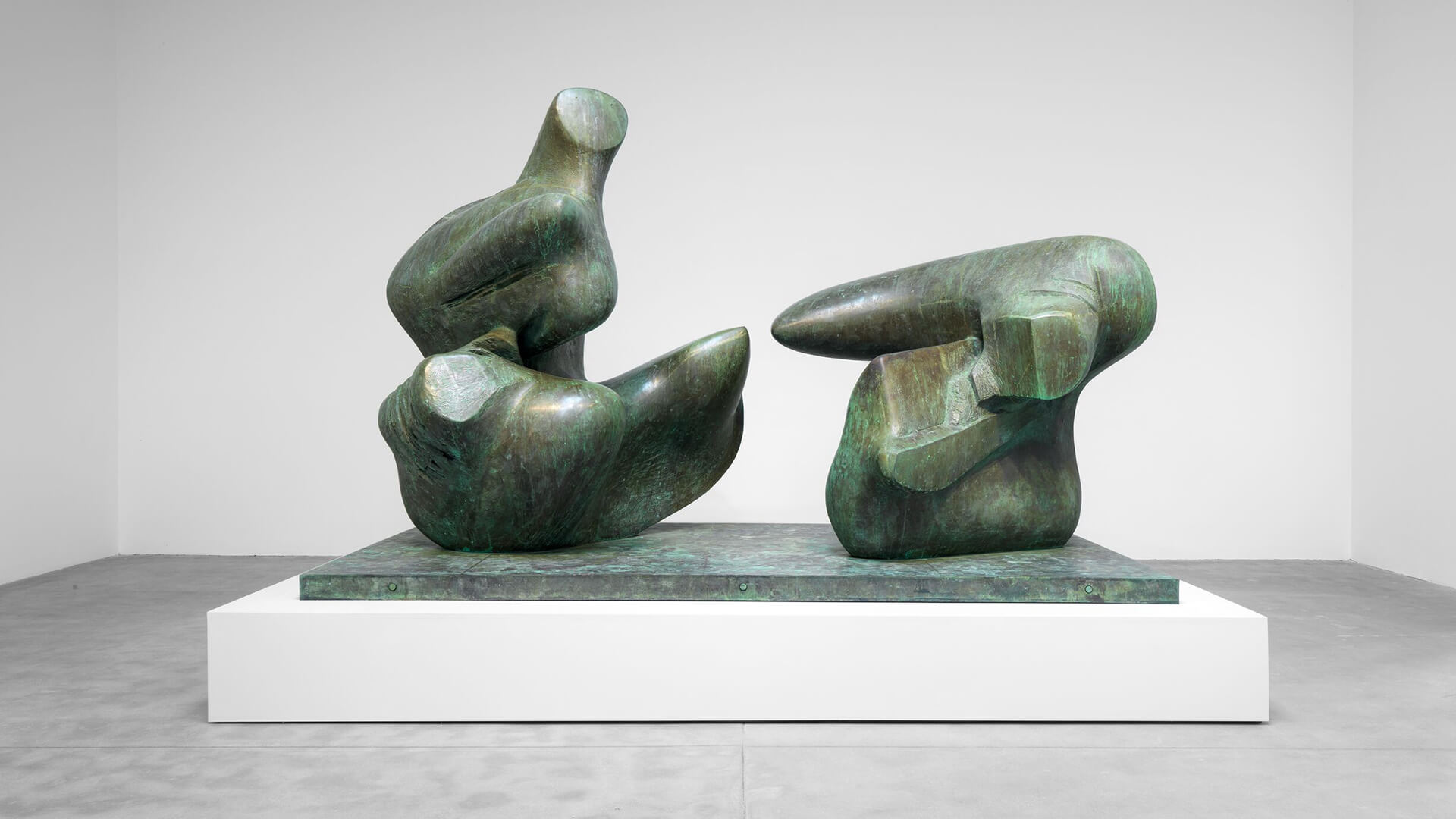
The exhibition takes as its starting point the artist’s early fascination with the Neolithic site of Stonehenge and continued exploration of the upright abstract form. Moore first encountered the prehistoric monuments under the moonlight as a young man in 1921; fifty-two years later he embarked on a series of lithographs on the subject. Moore was fascinated by the relationship between the towering masses of ancient stone, their size and siting in the landscape, and the mysterious ‘depths and distances’ evoked on his returning visits. For Moore, the power and intensity of such large forms set against land and sky precipitated career-long investigations into scale, material and volume and the juxtaposition of art and nature, which is presented throughout the exhibition.

Alongside Moore’s most celebrated works, the viewer is immersed in a deeply personal selection of artworks and objects curated by Mary Moore, set within the centre of the exhibition. The collection contains almost 100 items from her father’s studio and home, providing an insight into the working life of the sculptor and intimate memories she holds through these objects. The unique experience brings together Moore’s visual library and the vocabulary of ideas that he developed during his working life.

As visitors arrive at the Threshing Barn, they encounter four towering bronze Upright Motive sculptures. Between 1955 and 1979 Moore created nine large-scale Upright Motives and a substantial group of related maquettes and reliefs in bronze and plaster. Presented together, the interplay of these works is reminiscent of prehistoric monoliths or Celtic cruciform, creating relationships between the forms and the spaces between them. The motives are ambiguously figurative, while firmly rooted, evoking the organic growth of trees and stalagmites. Deep grooves and intriguing orifices encourage close-up inspection, while moving through and around them collectively causes reflection on different modes of human expression.
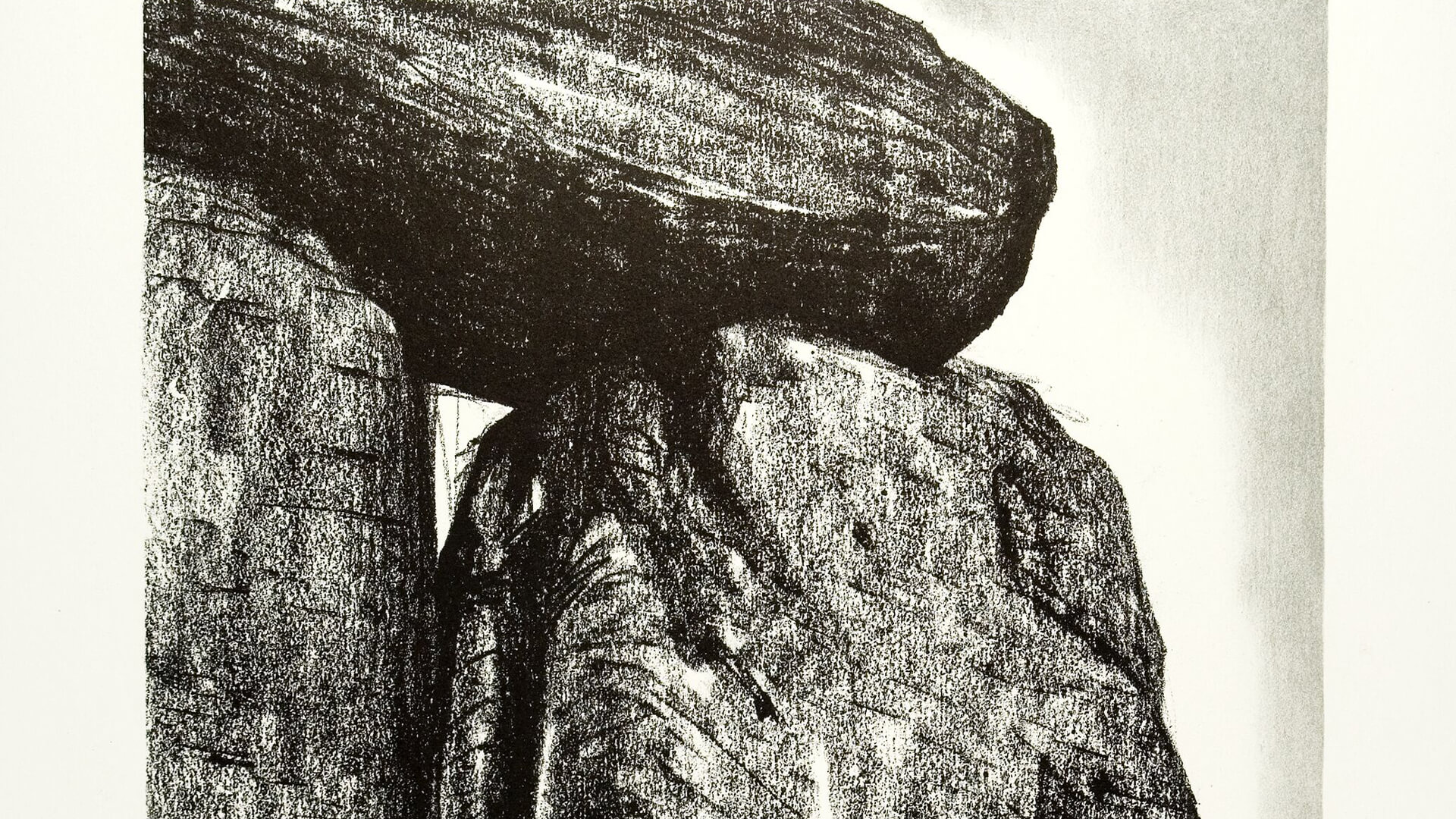
The Workshop Gallery features Moore’s significant series of etchings and lithographs depicting the site of Stonehenge, dating from 1972. In these works, we see Moore continuing to explore the relationship of the stones to each other and to the spectator, from tightly framed examinations of surface to wider views. During the early 20th Century there was an increasing interest in similar Neolithic sites, thanks to recent archaeological discoveries. Stonehenge was viewed as a highly wrought work of art, its powerful and primal forms capable of soliciting a profound emotional response.
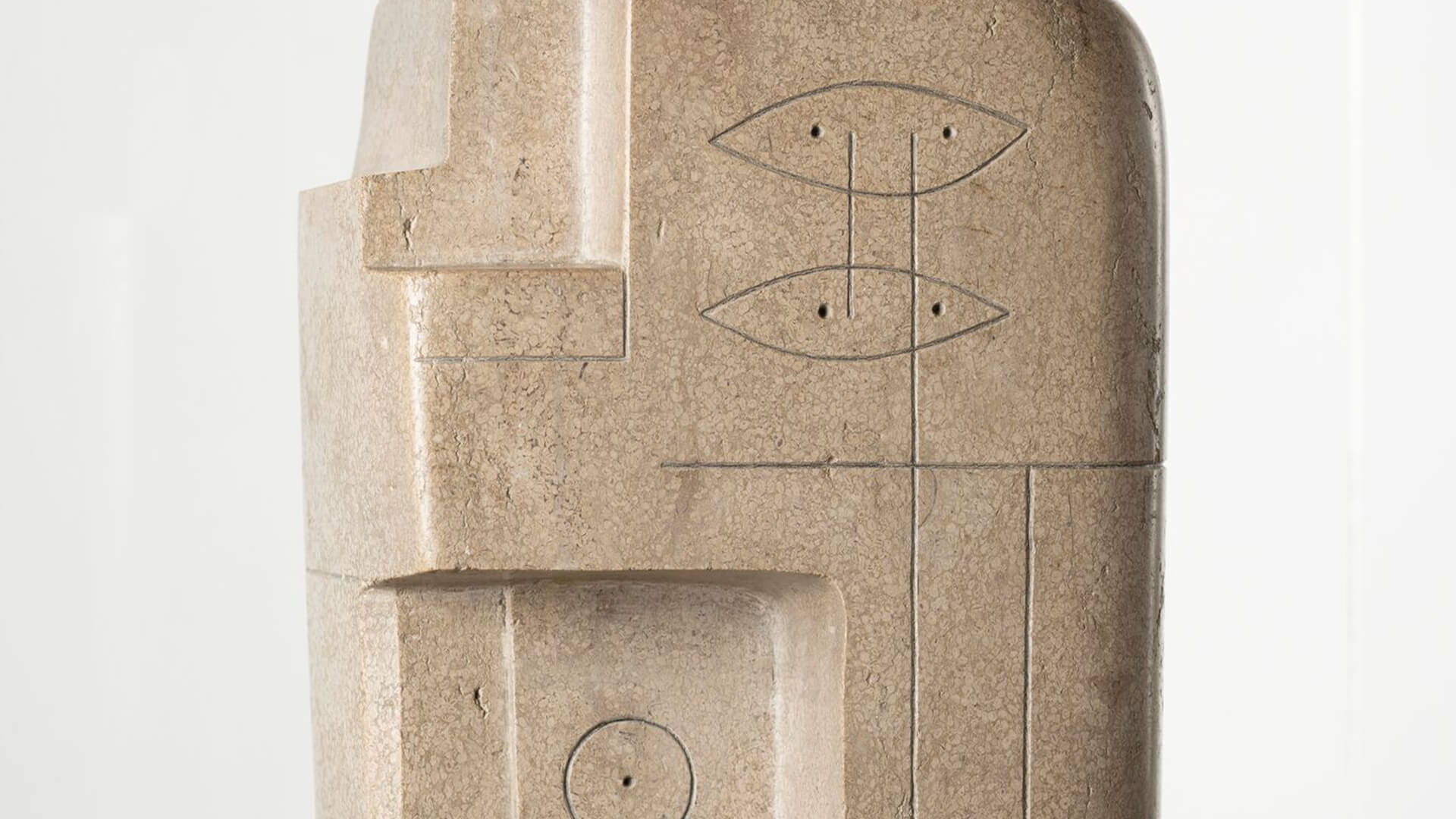
While Moore was fascinated by the ancient and enigmatic history of the site, of even greater impact was the grandeur of the sculptural idea. In the 1920s and 1930s Moore, alongside other avant-garde sculptors, championed the principles of direct carving and truth to materials. By working directly with stone and allowing its natural properties to emerge, Moore bridges ancient with modern. Works such as ‘Square Form’ (1934) marries a surface incised with rune-like glyphs with a solidity of stature that speaks of the universal power of prehistoric stones.

Upon entering the Pigsty Gallery, the visitor is immersed in Moore’s studio environment, including intimate, domestic objects from the artist’s family home. Mary Moore has selected cherished works of art from diverse backgrounds that demonstrate Moore’s engagement with ethnography, including Mayan, Aztec, Oceanic and Classical. These works sit seamlessly alongside found natural objects, which Moore frequently collected from the landscape. Moore’s working process and creative mind are vividly brought to life by the juxtaposition of artist’s tools, maquettes and wall reliefs, both in plaster and their final bronze state.
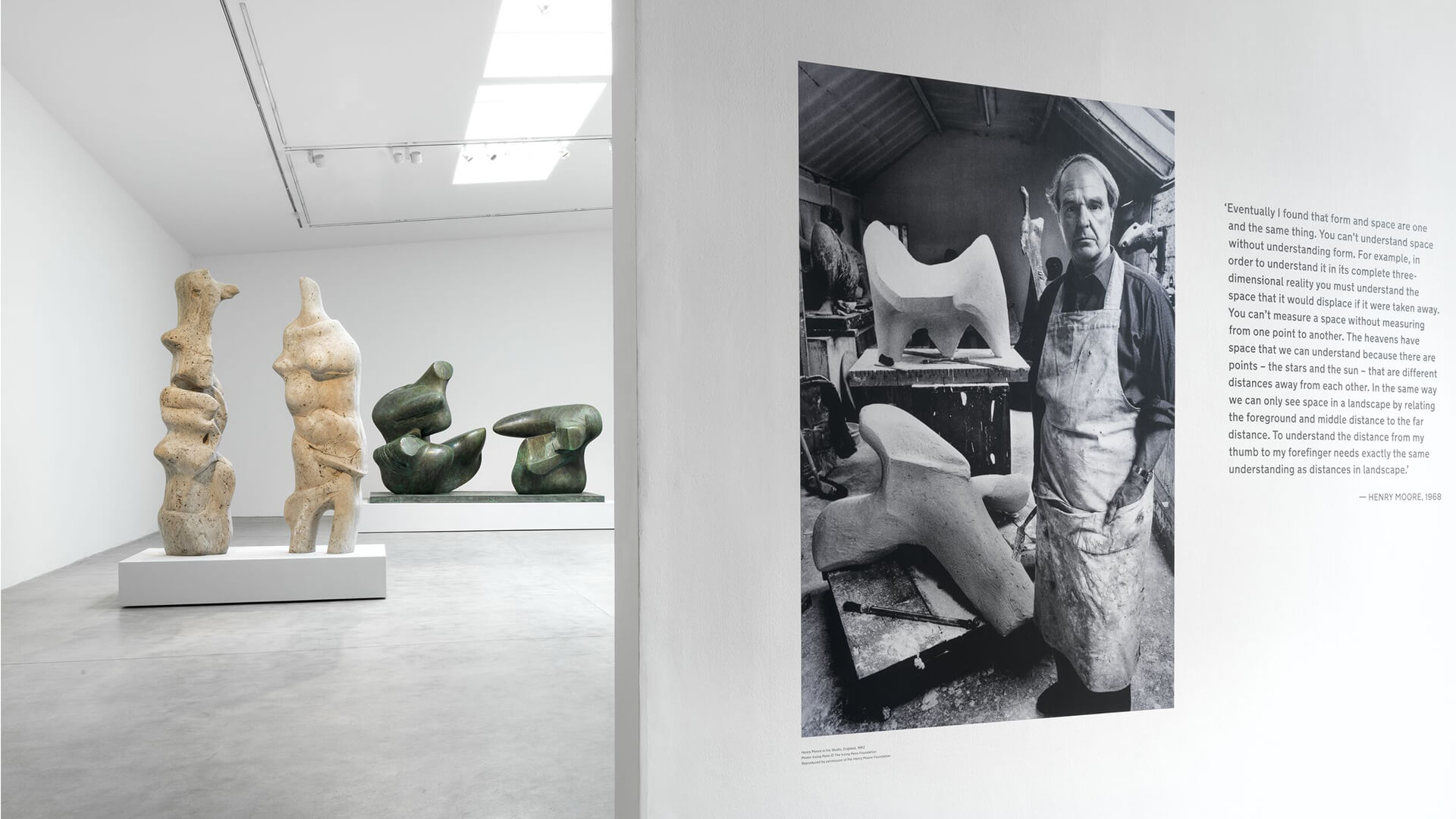
As a result of his experimental studio process, Moore arrived at a fluency of sculptural language which he could employ in a variety of materials and on different scales. In bronze, stone and plaster, in relief and in the round, earthbound or poised on points, the works within the Rhoades Gallery embody Moore’s understanding of gravity and weight, volume and space. The petrification of the body was a common theme in folklore and permeates ancient sites such as Carnac or the Merry Maidens in Cornwall, where dancing women or pagan soldiers were turned to standing stone. The emergence of figures from stone is clearly seen in ‘Two Standing Figures’ (1981) in which Moore also evokes the counter to petrification, the sculpture brought to life. It is not only the mass of the two rising figures but the envelope of space between them that animates the work.
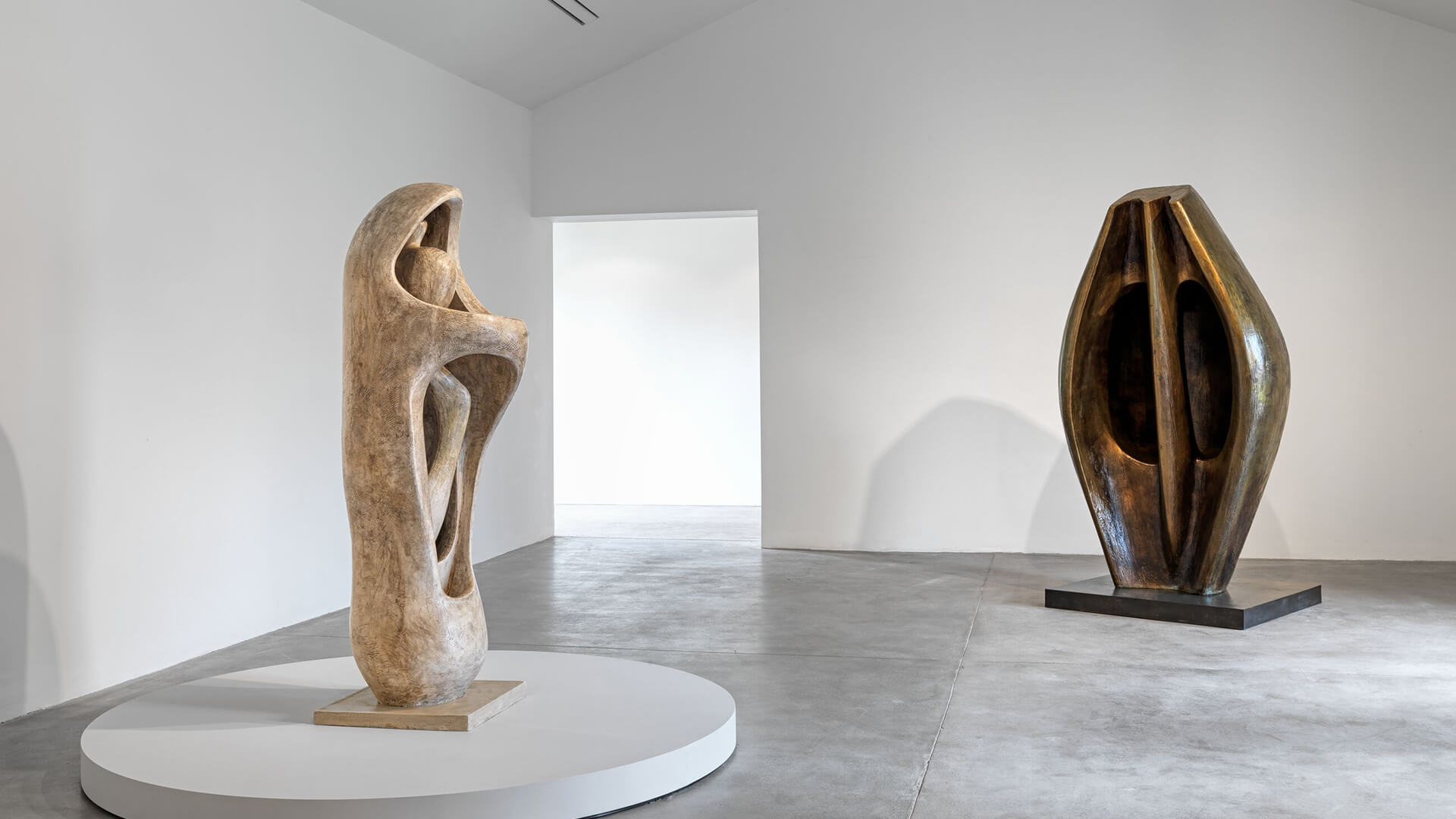
Works presented within the Bourgeois Gallery highlights how Moore repeatedly explored the theme of internal / external forms, enjoying the visual excitement generated by presenting one form through another. Observing similar structures in armour and in nature, such as shells of crustaceans, seed pods and our own skulls, he connected the theme to ideas of growth, nurture and protection. Moore made frequent visits to the varied museums of London. The mathematical models of the Science Museum precipitated a number of works in which he used string in juxtaposition with a curvilinear mass, offering both formal and symbolic possibilities, such as ‘Stringed Figure: Bowl’ (1938 cast 1967). String could simultaneously enclose and reveal space, creating a transparent and permeable surface.
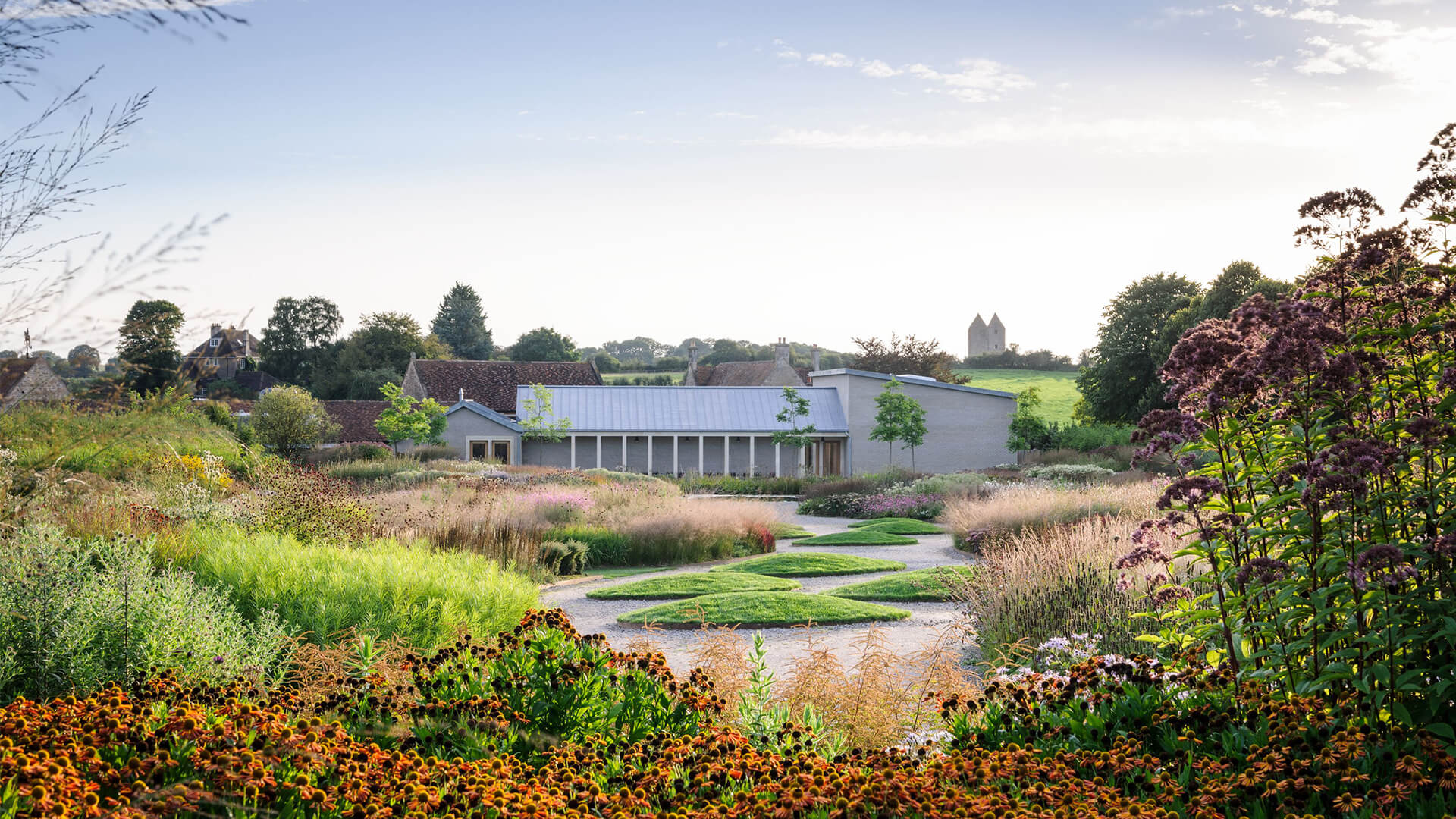
On view in Somerset
Until Sun 4 Sep 2022, the gallery is open Mon – Sun, 10 am – 5 pm. Please visit our location page for more information.
About the Artist
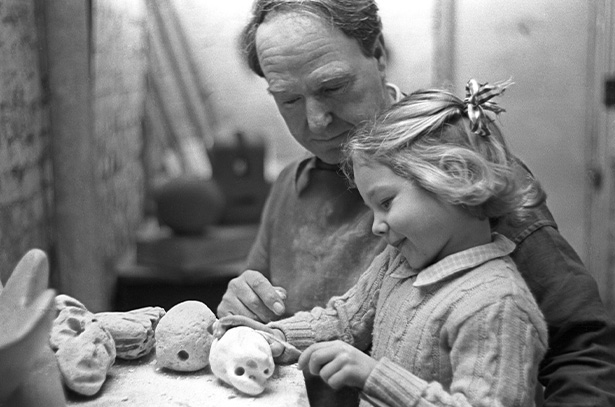
Henry Moore
The human figure, enigmatically isolated or in relationship with others, is both the stimulus and the crux of all Henry Moore’s works. For him, creating his sculptures was not so much an abstract exercize in looking at the human figure, but a personal investigation and violation of the artist’s own body: ‘When I carve into the chest,’ he commented, ‘I feel as if I were carving into my own.’ In 1943, Moore was commissioned to carve a Madonna and Child for the Church of St. Matthew, Northampton; this sculpture was the first in an important series of family-group sculptures. Moore's large-sized abstract sculptures can be encountered in numerous international public places (like Reclining Figure, 1956–58, UNESCO, Paris). Overlooked sometimes, are his fascinating drawings, often inspired by poetry and mythology. For his works on paper, Moore received important stimuli from so-called primitive art from Africa, the South Seas and Egypt, but at the same time from contemporaries such as Picasso and Giacometti. Hovering between abstraction and figuration, Moore developed his own unique language of form.
Born in 1898 and originally from West Yorkshire, Moore studied at both the Leeds School of Art and the Royal College of Art in the 1920s. Before World War II Moore’s works were widely exhibited in his home country, in the 1940s he also started to gain international success. In 1946, Moore's radical vision on sculpture was celebrated in his first international retrospective at the Museum of Modern Art in New York. In 1948 Moore represented Great Britain at the 24th Venice Biennale and won the International Prize for Sculpture for his participation the same year. In 1963 the artist was awarded the British Order of Merit. To this day, Moore is celebrated as the most important British sculptor of the twentieth century for his particular addressing of the human form and uncompromising vision, which make him an abiding influence for contemporary artists.
Together with his daughter Mary Moore, he established the Henry Moore Foundation in 1977, which administers his works. Since his death in 1986, the interest in his work has only continued to grow: in 2015 Moore’s works were presented at National Roman Museum in Rome and in 2017 he was the subject of a solo exhibition at the Arp Museum Bahnhof Rolandseck, Germany. At Tate Modern, London, two rooms are dedicated to display over 30 of his works.
Inquire about available works in ‘Henry Moore. Sharing Form’
Running concurrently with ‘Henry Moore. Sharing Form’ in Somerset, ‘Henry Moore: The Sixties’ is also on view from 1 April – 30 October 2022 at the Henry Moore Studios and Gardens, Perry Green, Hertfordshire.
‘Henry Moore. Sharing Form’ is on view now through 4 September 2022 at Hauser & Wirth Somerset.
Related Content
Current Exhibitions
1 / 12
